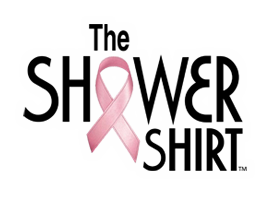FAQ
Showering with Hemodialysis Catheters
Why are ESRD patients and kidney/dialysis centers choosing The SHOWER SHIRT™ over traditional cover catheter disposable dressings for showering?
Cost Savings for Patients: Each disposable catheter dressing costs an average of $2.50 per unit. When showering 30-days per month, the cost averages $75.00 for 1 month of showering, when showering twice a day — the cost would average $150.00 per month. The Shower Shirt™ can be purchased for around $75.00 (retail) with unlimited shelf life. Most hemodialysis patients have catheters in place for a minimum period of 8 –10 months; utilizing disposable dressings would cost between $1,000 and $1,800 during the dialysis treatment period.
Cost Savings for Kidney/Dialysis Center: The majority of centers in this country supply patients with a few disposable waterproof cover dressings in between weekly treatments. Centers have realized they can purchase The SHOWER SHIRT™ at a wholesale rate to provide patients with a product which has unlimited shelf-life. Centers also realize that patients WILL SHOWER without protection when needed and many patients will not purchase disposable waterproof dressings due to financial constraints. The goal is to provide a product with unlimited shelf life to protect the patient, and subsequently save money for both parties.
If drains are not placed post-surgery, what type of complications can occur?
What directions are given to patients in terms of showering/bathing after surgery and before surgical drains have been removed?
What’s in the water that can be harmful if it gets into the surgery site?
What can happen if the surgical site is compromised with infection?
Why do most physicians say DO NOT shower while drains are in place post surgery, and other physicians say it’s ok?
What types of products are available to protect patients while showering post-mastectomy?
The Shower Shirt™ is the only approved Class 1 Medical Device on the market to protect mastectomy patients while showering after surgery, and before surgical drains are removed.
Disposable waterproof dressings can irritate the skin as they stick to the skin for protection. The product has been known to tear the skin of geriatric patients. After multiple uses, the patient’s skin can become worsened by the ‘sticking on’ and ‘pulling off’ of the glue perimeters of the dressings. The SHOWER SHIRT™ does not stick to the body; elastic perimeters keep the regions dry and protected, along with Velcro strapping (around the neck and down the front), microfiber, zippers, and drawstrings.
Why are patients with hemodialysis catheters susceptible to infection?
Colonization of the external surface of the catheter, spread of organisms down the catheters’ intraluminal surfaces, and tap water has been implicated in CVC infections.
According to the National Kidney Foundation, in trying to decrease the chance of infection, patients should keep catheter dressings clean and dry: Patients should not shower without water-resistant protection; should not wet catheter site or catheter dressing. Taking a bath is safe if the catheter, or catheter dressing does not get wet.
